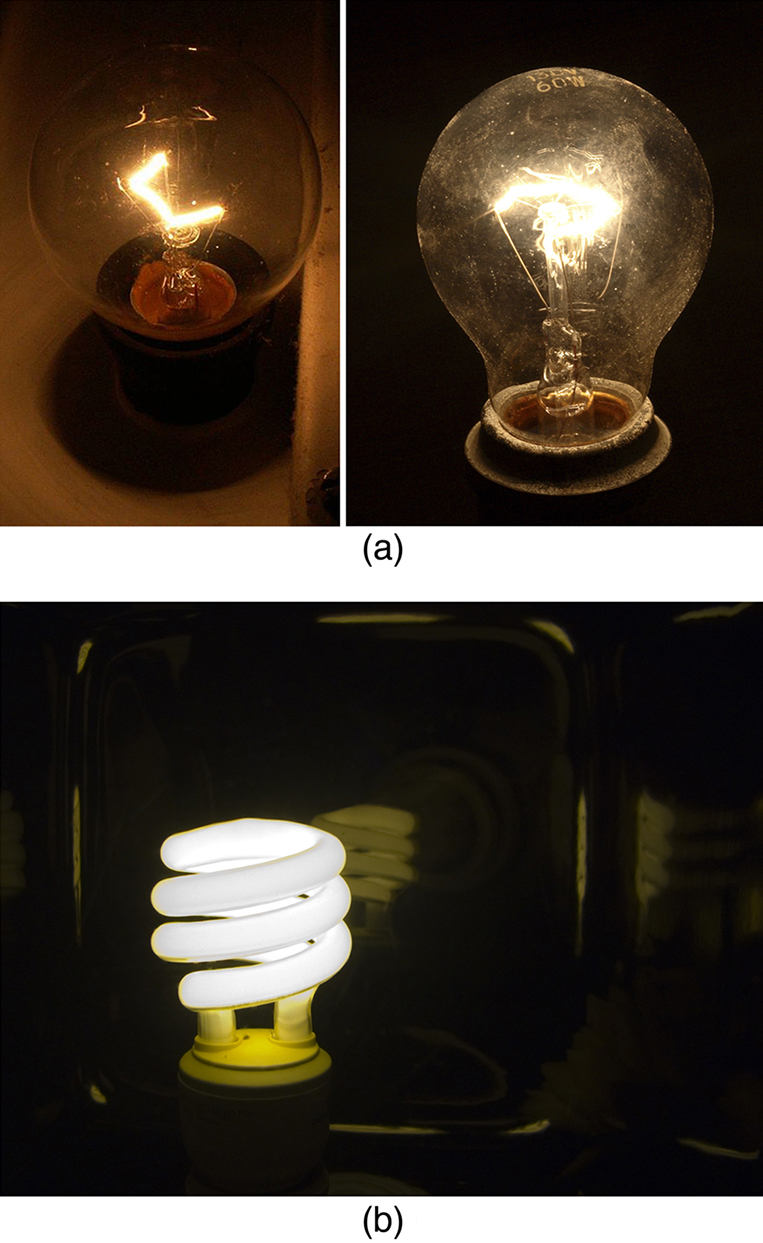| << Chapter < Page | Chapter >> Page > |
Power is associated by many people with electricity. Knowing that power is the rate of energy use or energy conversion, what is the expression for electric power ? Power transmission lines might come to mind. We also think of lightbulbs in terms of their power ratings in watts. Let us compare a 25-W bulb with a 60-W bulb. (See [link] (a).) Since both operate on the same voltage, the 60-W bulb must draw more current to have a greater power rating. Thus the 60-W bulb’s resistance must be lower than that of a 25-W bulb. If we increase voltage, we also increase power. For example, when a 25-W bulb that is designed to operate on 120 V is connected to 240 V, it briefly glows very brightly and then burns out. Precisely how are voltage, current, and resistance related to electric power?

Electric energy depends on both the voltage involved and the charge moved. This is expressed most simply as , where is the charge moved and is the voltage (or more precisely, the potential difference the charge moves through). Power is the rate at which energy is moved, and so electric power is
Recognizing that current is (note that here), the expression for power becomes
Electric power ( ) is simply the product of current times voltage. Power has familiar units of watts. Since the SI unit for potential energy (PE) is the joule, power has units of joules per second, or watts. Thus, . For example, cars often have one or more auxiliary power outlets with which you can charge a cell phone or other electronic devices. These outlets may be rated at 20 A, so that the circuit can deliver a maximum power . In some applications, electric power may be expressed as volt-amperes or even kilovolt-amperes ( ).
To see the relationship of power to resistance, we combine Ohm’s law with . Substituting gives . Similarly, substituting gives . Three expressions for electric power are listed together here for convenience:
Note that the first equation is always valid, whereas the other two can be used only for resistors. In a simple circuit, with one voltage source and a single resistor, the power supplied by the voltage source and that dissipated by the resistor are identical. (In more complicated circuits, can be the power dissipated by a single device and not the total power in the circuit.)

Notification Switch
Would you like to follow the 'College physics (engineering physics 2, tuas)' conversation and receive update notifications?